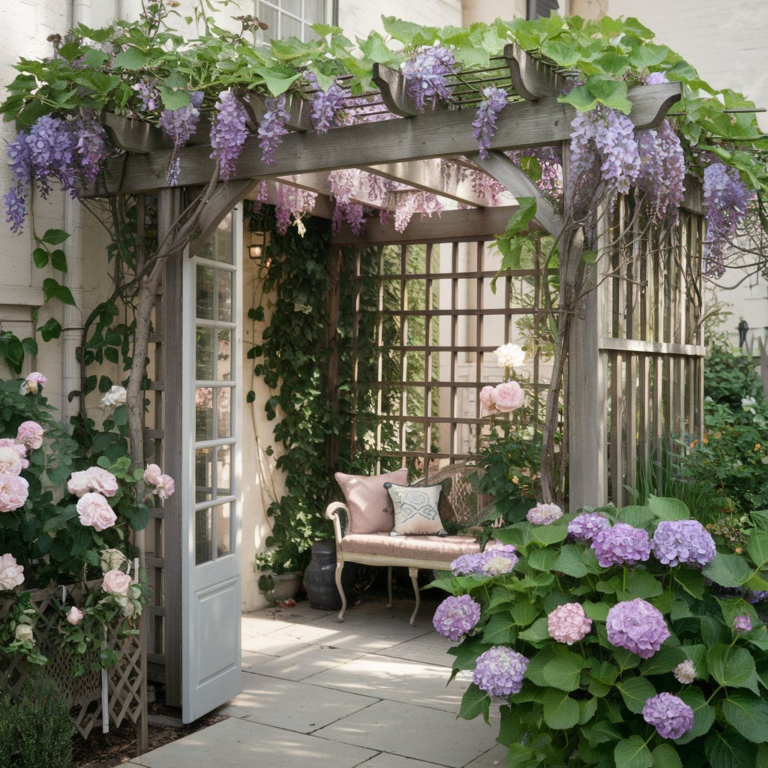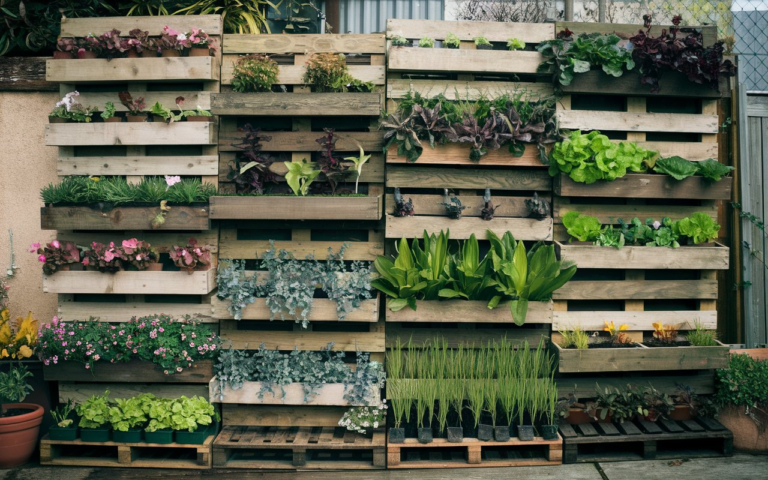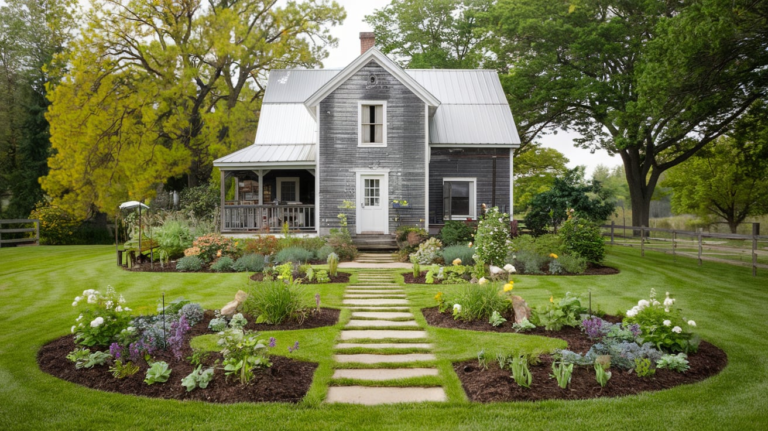22 Best Japanese Garden Ideas to Transform Your Backyard

Imagine stepping into your backyard and feeling as though you’ve been transported to a tranquil sanctuary in Kyoto.
Japanese gardens are more than just landscapes—they are living works of art, designed to evoke peace, reflection, and a profound connection with nature.
If your backyard is ready for a soulful makeover, look no further than these 22 Japanese garden ideas to create your serene oasis.
1. Zen Rock Garden (Karesansui)

A Zen rock garden is a minimalist masterpiece. These gardens, also known as dry landscapes, are composed of raked gravel, strategically placed stones, and minimal plant life. The act of raking the gravel into patterns mimicking waves is meditative. Place stones of different sizes to symbolize mountains or islands.
Tip: Start with a small area and experiment with patterns. Keep the design simple for a peaceful vibe.
2. Incorporate a Koi Pond

No Japanese garden is complete without the elegance of a koi pond. The colorful koi symbolize perseverance and strength, while the gentle movement of water adds a soothing element to the garden.
Tip: Add water lilies and floating plants to enhance the aesthetic, and install a small waterfall for a gentle soundscape.
3. Bamboo Privacy Fencing

Want to create an intimate retreat? Bamboo fences are a hallmark of Japanese garden design. Not only do they offer privacy, but they also exude natural elegance. Use split bamboo panels or vertical poles to frame your garden.
Tip: Combine bamboo fencing with climbing vines for a soft, layered effect.
4. Pathways of Natural Stone

Create a sense of mystery and discovery with stone pathways. Use irregular, natural stones to guide visitors through your garden. Arrange the stones unevenly to mimic the natural flow of a forest trail.
Tip: Space the stones comfortably apart, ensuring they remain functional and safe for walking.
5. Add a Tsukubai (Water Basin)
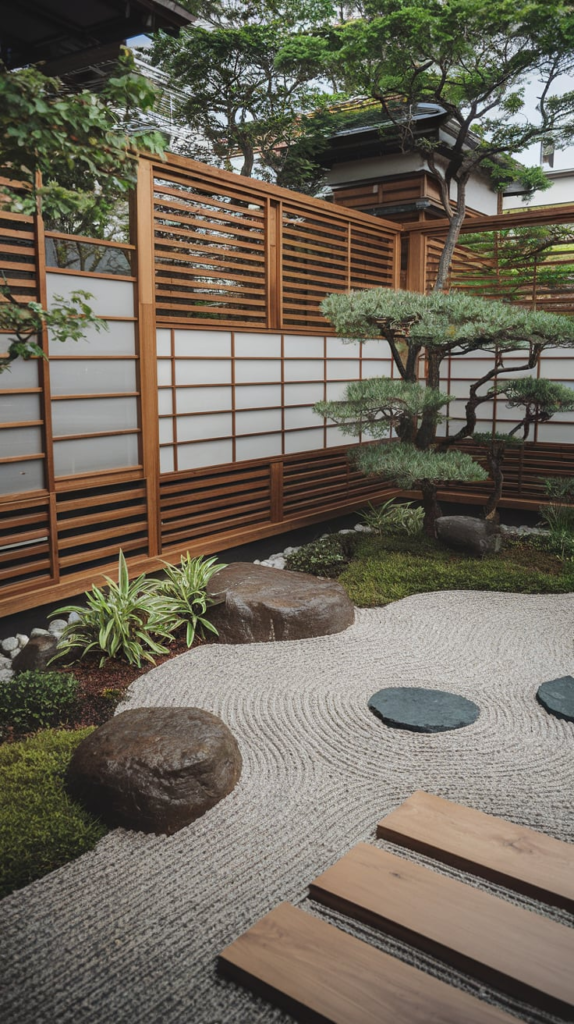
A Tsukubai is a small, often stone, water basin traditionally used for ritual cleansing in Japanese tea gardens. Its simple design adds cultural authenticity and a meditative touch to your backyard.
Tip: Surround the Tsukubai with moss and small stones for an organic feel, and use a bamboo spout for water flow.
6. Moss Carpeting

Nothing whispers “ancient tranquility” like a lush carpet of moss. Perfect for shaded areas, moss adds texture and a soft green hue to your garden.
Tip: Use different moss varieties to create subtle gradients and patterns. Keep the soil consistently moist for optimal growth.
7. Japanese Maple Trees

Japanese maples are the crown jewels of any Japanese garden. Their vibrant leaves in shades of red, orange, and gold provide a stunning focal point, especially in autumn.
Tip: Choose dwarf varieties for smaller gardens and plant them near water features or pathways for maximum visual impact.
8. Lanterns for Ambiance (Ishi-doro)

Traditional stone lanterns (Ishi-doro) bring an air of timeless elegance to Japanese gardens. These lanterns, often carved from granite, are placed near pathways, water features, or under trees.
Tip: Position your lantern where its soft glow will illuminate key features of your garden during twilight.
9. Wabi-Sabi Design Principles

Embrace the Japanese aesthetic of wabi-sabi, which celebrates imperfection and transience. Incorporate weathered wood, asymmetry, and organic shapes into your design.
Tip: Let natural elements like lichen-covered stones or aged fences remain untouched to highlight their beauty.
10. Cherry Blossoms (Sakura)

Cherry blossom trees are synonymous with Japanese gardens. Their delicate pink flowers create a dreamy ambiance when in bloom.
Tip: Plant your cherry blossom tree in a spot where it will frame a key view, such as a pond or seating area.
11. Shoji Screens as Garden Dividers

Add a touch of Japanese architecture with shoji screens, which can act as dividers between garden zones. These translucent screens diffuse light beautifully, creating a calming atmosphere.
Tip: Use weatherproof materials to ensure longevity if placing them outdoors.
12. Gravel Gardens with Patterns

Design intricate gravel patterns to represent rippling water or swirling currents. These are perfect for areas where you want to avoid planting but still crave visual interest.
Tip: A sturdy rake with fine teeth will help you achieve detailed designs.
13. Simple Wooden Bridges

A small, arched wooden bridge adds charm and function, connecting garden sections or spanning a koi pond. Painted red bridges are iconic, but natural wood bridges blend more seamlessly into the surroundings.
Tip: Choose weather-resistant wood like cedar or teak to ensure durability.
14. Japanese Pagoda Sculptures

Pagoda statues bring a sense of height and verticality to a flat landscape. Their multi-tiered design symbolizes harmony and connection to the spiritual world.
Tip: Position pagodas near lush greenery or moss beds to contrast their structure against organic textures.
15. Stone Stepping-Stones (Tobi-ishi)

Use stepping-stones to lead visitors through the garden while keeping their attention grounded. Stepping-stones also add a practical element, allowing access without disturbing the moss or gravel.
Tip: Mix stone shapes and sizes, but maintain a consistent material for a cohesive look.
16. Create a Tea House Corner

Designate a corner of your garden as a tea house or meditation space. Use traditional materials like wood and bamboo to create a structure where you can unwind.
Tip: A simple bench under a pergola can serve as an alternative if space or budget is limited.
17. Ikebana-Inspired Plantings

Borrow from the Japanese art of ikebana, or flower arranging, by incorporating deliberate, minimalist plant groupings. Focus on asymmetry and balance.
Tip: Use plants like bamboo, pine, and flowering shrubs to mimic the artful simplicity of ikebana.
18. Tori Gate (Symbolic Entryway)
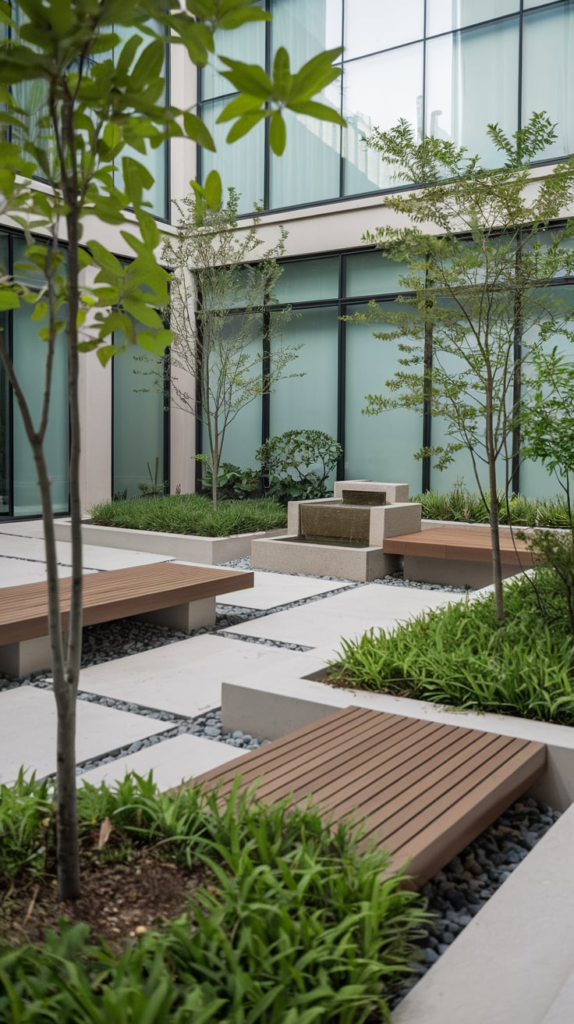
A tori gate serves as a spiritual threshold, marking the transition into a sacred space. Traditional gates are painted red, but wooden versions offer a natural alternative.
Tip: Frame the gate with lush plants or climbers to enhance its impact.
19. Rain Chains (Kusari-doi)

Replace ordinary downspouts with rain chains, which guide rainwater into decorative basins. The cascading water creates a soft, pleasant sound.
Tip: Use copper or steel chains for durability and aesthetics.
20. Miniature Bonsai Trees

Introduce bonsai trees for a miniature representation of nature. These living sculptures require care and patience but are deeply rewarding to cultivate.
Tip: Place bonsai trees on stone pedestals to elevate their significance in the garden.
21. Seasonal Blooms for Year-Round Interest

A Japanese garden should evolve with the seasons. Include plants like azaleas, camellias, and irises for vibrant seasonal displays.
Tip: Research the bloom times of your chosen plants to ensure continuous color throughout the year.
22. Soundscapes with Wind Chimes

Add a sensory element with wind chimes, which fill the air with soft, melodic tones. Choose chimes made of bamboo or metal for different sound profiles.
Tip: Hang wind chimes near seating areas or pathways where they can be appreciated up close.
Conclusion

Crafting a Japanese garden is like writing a haiku—it’s about capturing the essence of nature with simplicity and elegance.
Whether you’re starting small with a Zen rock corner or dreaming big with koi ponds and pagodas, each element you add will contribute to the harmony of your outdoor sanctuary.

